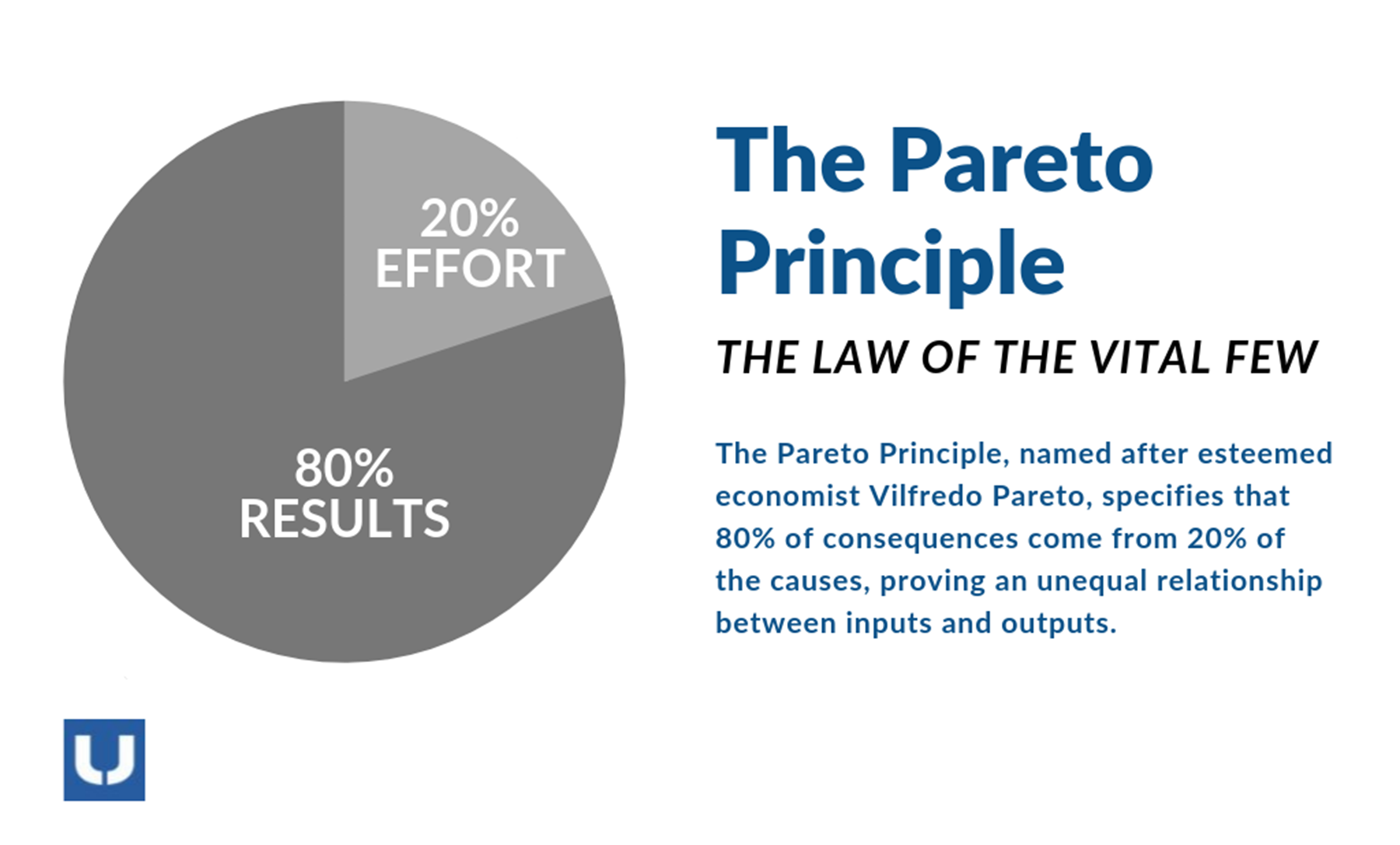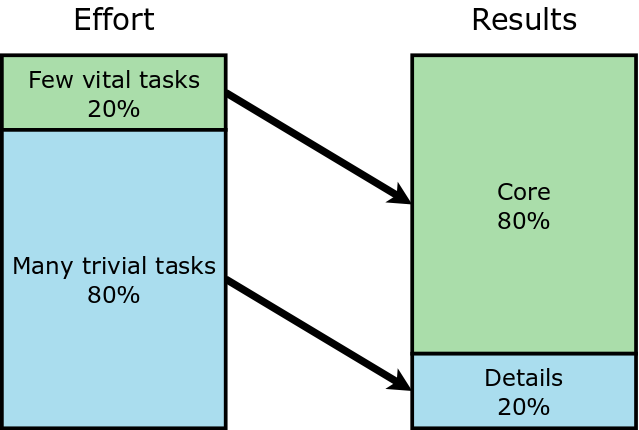
What's important is the magnitude of the imbalance between the 2 values and not their exact numbers.

For instance, 5% of your web pages may be responsible for 67% of all pageviews and, in many social media, 1% of users account for 90% of postings.

Also, there's no guarantee your data will neatly follow an 80/20 distribution. The Pareto principle doesn't predict when this phenomenon happens, nor does it explain why it happens. A small increase in x leads to a substantial change in y. Examples include y = x2, y = 5x3, or y = 2.5 x-5. In basic terms, a power law describes a mathematical relationship between 2 variables: one variable is proportional to the other variable raised to a certain power. The Pareto principle is a statistical power law describing a particular Pareto distribution, a distribution closely related to Zipf curves. 20% of possible openings are used in 80% of chess games.
VILFREDO PARETO PRINCIPLE SOFTWARE
20% of software bugs contribute to 80% of computer crashes.20% of academic papers make up 80% of all citations.20% of customers generate 80% of a company's revenue.20% of websites capture 80% of web traffic.In the 20th century, management consultant Joseph Juran rediscovered Pareto's work and popularized it as the Pareto principle to prioritize investing valuable effort on the "vital few" instead of the "trivial many."Ī surprisingly wide range of contexts have demonstrated this 80/20 imbalance: When he began studying land ownership and wealth inequality, he again noticed that 80% of Italy's land was owned by only 20% of its people. In the 19th century, the Italian economist and engineer Vilfredo Pareto noticed that 80% of the peas from his garden came from just 20% of the peapods. What Is the Pareto Principle?ĭefinition: The Pareto principle (also described as the "80/20 Rule") states that 80% of the results come from 20% of the causes. What can UX professionals do when confronted with so much quantitative data? Consider using the Pareto Principle. The scope and robustness of analytics tools can mire any design team with information overload and analysis paralysis.

Congratulations! There is a rush of excitement as the UX team dreams of conducting A/B testing on design improvements or (finally) convincing skeptical stakeholders with quantitative user data.Ī few months pass and that initial excitement turns into dismay - there are so many pages, reports, and metrics to consider. Imagine this: after dozens of meetings with your company's legal, marketing, and engineering departments, you finally have access to an analytics tool.


 0 kommentar(er)
0 kommentar(er)
